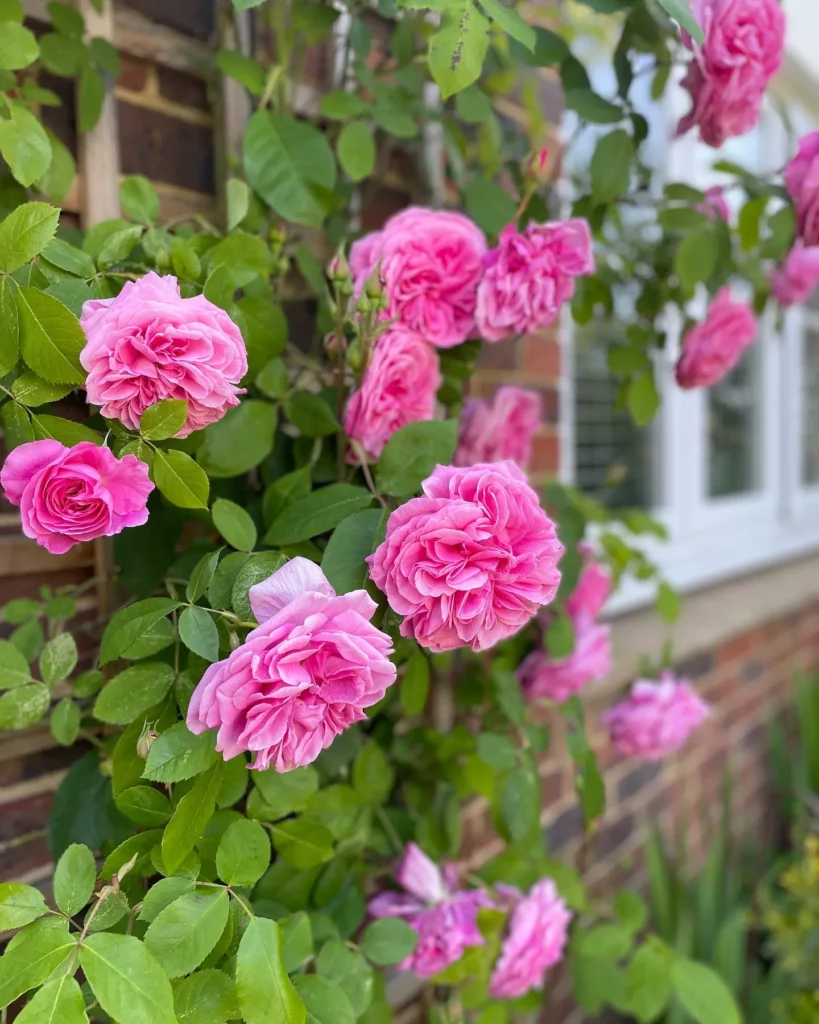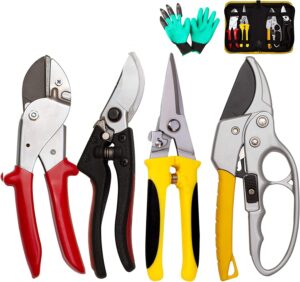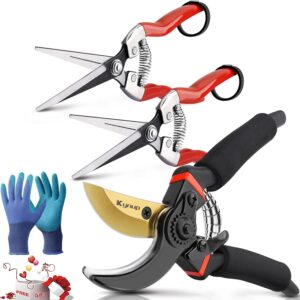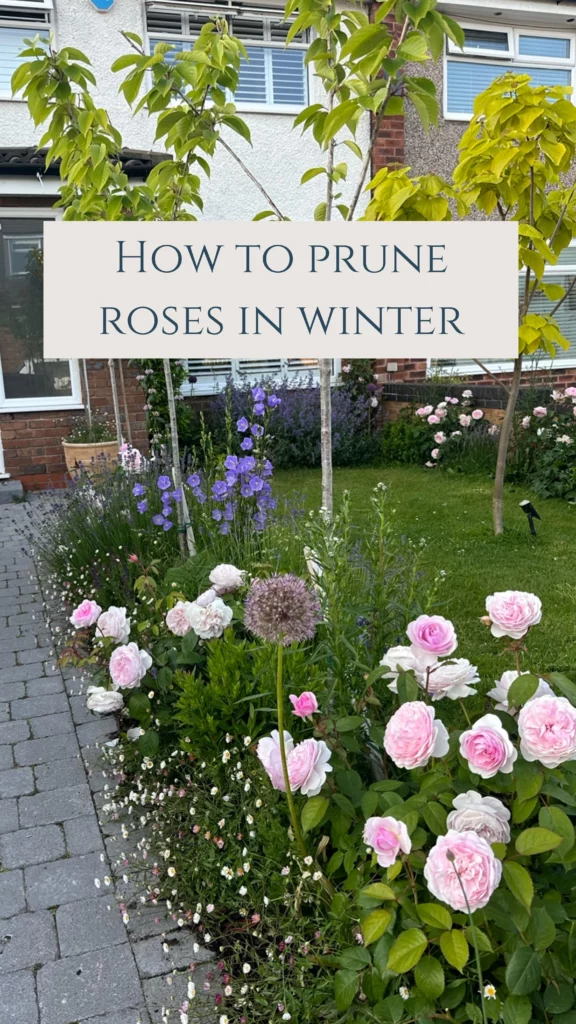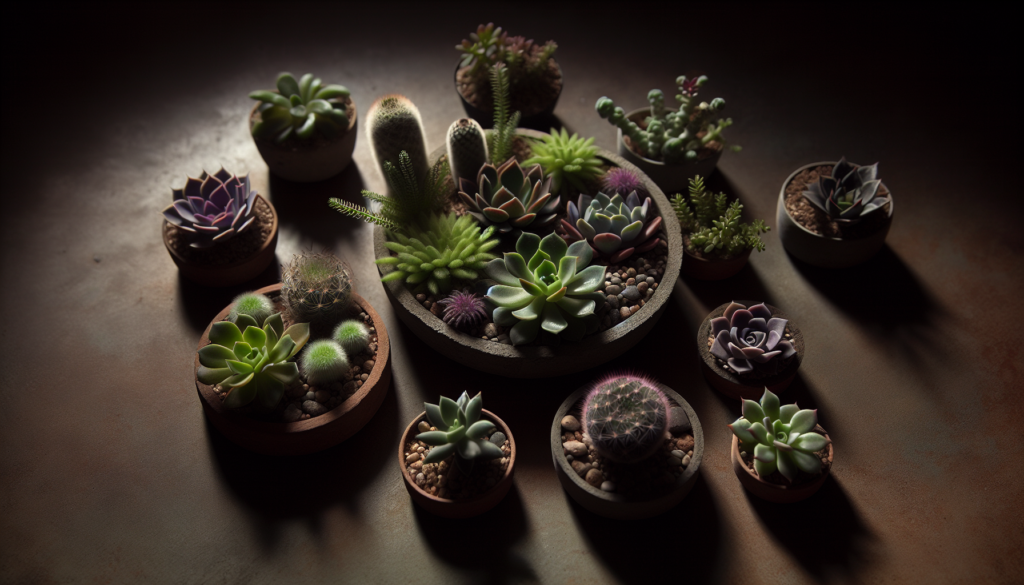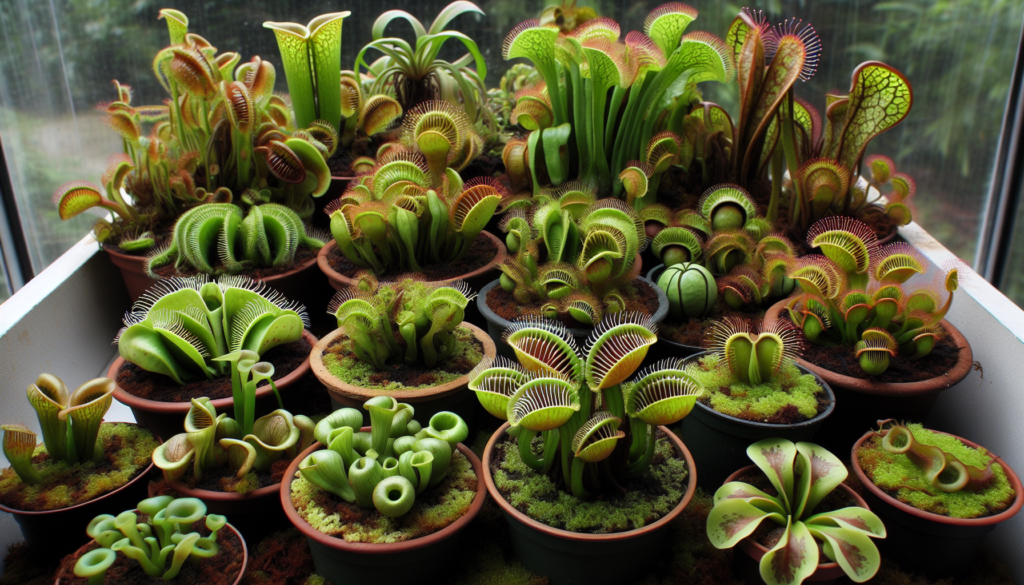In late winter, prune roses by removing dead or diseased wood, cutting back to an outward-facing bud to shape the plant and encourage outward growth, and ensuring good air circulation within the bush.
This guide will detail the critical process of pruning roses in late winter, presenting seven steps for promoting plant health and enhancing blossom beauty.
Pruning during dormancy rejuvenates roses, stimulates growth, and optimizes flowering, by removing dead or diseased branches, improving air circulation, and preventing fungal diseases, thus ensuring abundant, vigorous blooms in spring.
Understanding the Benefits of Pruning Roses in Late Winter
Pruning roses during the late winter season offers a multitude of benefits for the health and beauty of your plants. By engaging in this essential gardening practice, you can enjoy a flourishing rose garden with abundant blooms throughout the spring and summer.
Let’s explore the advantages of pruning roses in late winter:
1. Removing dead, damaged, or diseased branches
Pruning allows you to eliminate any dead, damaged, or diseased branches from your rose bushes. By removing these unhealthy parts, you prevent the spread of pests and diseases, promoting the overall well-being of your plants.
2. Improving air circulation
When you prune your roses, you create space between branches, allowing for better air circulation around the plant. Improved air flow helps prevent the development of fungal diseases, such as powdery mildew, and keeps your roses healthier and more resistant to various ailments.
3. Encouraging new growth
Pruning stimulates the growth of new shoots and branches by promoting the development of dormant buds. This results in denser foliage and more abundant blooms when the growing season comes around. Regular pruning also encourages the production of longer stems, making your roses ideal for cutting and arranging.
4. Enhancing overall health and vigor
By removing dead or weak branches, your rose plant can redirect its energy to the growth of healthier, stronger ones. Pruning helps improve the overall health and vigor of the roses, making them more resilient against environmental stressors and enabling them to thrive year after year.
5. Setting the stage for spring and summer blossoms
Pruning in late winter prepares your roses for a spectacular display of blooms in the coming seasons. By shaping the plant’s structure during its dormant period, you encourage the growth of new flowering canes that will bear vibrant and fragrant flowers, transforming your garden into a captivating sight.
Tools and Equipment for Pruning Roses in Late Winter
When it comes to pruning roses in late winter, having the right tools and equipment is essential. With the proper tools, you can efficiently trim your roses, ensuring healthier plants and optimal flowering.
Here are some must-have tools and equipment for late winter pruning:
1. Sharp Pruners
Invest in a good pair of bypass pruners with sharp blades. These pruners will make clean cuts without crushing the stems, promoting faster healing and minimizing the risk of disease transmission. Make sure to keep the blades sharp for precise cuts.
2. Loppers
Loppers are essential for cutting thicker branches that may be too large for pruners. Look for loppers with long handles and sharp blades to easily reach and trim those hard-to-reach areas.
3. Protective Gloves
Protect your hands from thorns and potential injuries by wearing a sturdy pair of gloves. Choose gloves that provide both comfort and protection, allowing you to handle your pruning tasks with ease.
4. Disinfecting Solution
Disinfecting your tools is crucial to prevent the spread of diseases between plants. Prepare a solution of one part bleach to nine parts water and use it to clean your pruning tools before and after each use. This simple step will help keep your roses healthy.
5. Pruning Saw (for larger branches)
For thicker branches that cannot be cut with loppers, a pruning saw is necessary. Look for a pruning saw with sharp teeth and a comfortable grip to make clean and precise cuts.
6. Pruning Sealant
While not essential, a pruning sealant can be used to seal larger cuts and prevent diseases from entering the freshly pruned areas. It is particularly useful when pruning older, larger branches.
Proper maintenance and cleaning of your tools are crucial for their longevity and effectiveness. Here are some tips to keep them in top condition:
- Regularly clean your tools with soap and water to remove any sap or debris.
- Dry your tools thoroughly after cleaning to prevent rust.
- Sharpen the blades of your pruners and loppers regularly to ensure clean and precise cuts.
- Apply a light coat of oil to the metal parts of your tools to prevent rust.
- Store your tools in a dry and secure place to protect them from damage.
Pruning Roses in Late Winter – Step-by-Step Guide
Pruning roses in late winter is a crucial step in maintaining the health and beauty of your rose bushes. By following these 7 simple steps, you can ensure that your roses thrive and produce an abundance of blossoms. Let’s dive into the step-by-step guide:
Identify the Appropriate Pruning Height
Start by determining how much you need to prune. Look for any dead, damaged, or diseased wood and remove it completely.
Then, aim to cut back the remaining branches to approximately one-third of their original height. This promotes new growth and prevents the rose bushes from becoming too leggy.
Make Clean Cuts
When pruning, always use sharp and clean pruning tools. Make clean cuts at a 45-degree angle, just above an outward-facing bud or node.
This will encourage the growth of new shoots and discourage disease or pest infestations. Avoid leaving stubs or jagged edges, as they can become entry points for pathogens.
Remove Dead Wood
Dead wood can hinder the overall health and appearance of your rose bushes. Carefully inspect the branches and remove any dead or dying wood back to healthy tissue.
Removing dead wood allows the plant to allocate its resources to healthy growth and prevents the spread of diseases.
Thinning Crowded Areas
During the late winter pruning, it’s important to thin out crowded areas within the rose bush. This opens up the center of the plant, allowing air and sunlight to reach all parts of the plant. Removing crowded branches also improves the plant’s overall shape and structure.
Shape the Overall Structure
As you prune, visualize the desired shape and structure for your rose bush. Remove any branches that are crossing or rubbing against each other.
Maintain an open framework that promotes good airflow and prevents branches from competing for resources. Consider the natural growth habit of the specific rose variety you have and prune accordingly.
Prune Climbers and Ramblers
When pruning climbing or rambling roses, the approach may vary. Prune out any dead, damaged, or diseased wood as usual.
However, for these types of roses, it’s also essential to train the remaining canes horizontally or along supports to encourage lateral branching and abundant blooms.
Clean up and Dispose of Pruned Debris
After completing the pruning, ensure you clean up and dispose of all pruned debris. Remove fallen leaves and any other plant material around the base of the rose bushes to minimize the risk of diseases and pests.
This step helps maintain a healthy environment for your roses to flourish.
Timing and Techniques for Different Types of Roses
Different types of roses require specific pruning techniques and timing. To ensure the health and vitality of your rose plants, it’s essential to understand the unique pruning needs of different rose varieties.
In this section, we will explore the optimal timing and techniques for pruning hybrid teas, floribundas, climbers, shrubs, and other popular rose types. By following the appropriate guidelines, you can maximize the growth and blooming potential of your roses.
Hybrid Teas
Hybrid tea roses are known for their large, single blooms and extended flowering season. For these roses, it is recommended to prune in late winter or early spring, ideally before new growth emerges.
Remove about one-third of the overall plant height and shape the bush by cutting just above an outward-facing bud at a slight angle.
Floribundas
Floribunda roses produce clusters of smaller blooms and offer continuous flowering throughout the season. Pruning should be done in late winter or early spring, similar to hybrid teas.
Remove any dead, damaged, or weak canes, and aim to maintain an open and balanced shape. Carefully thin out crowded areas to allow for proper air circulation and light penetration.
Climbers
Climbing roses are known for their vigorous growth and ability to scale fences, walls, or trellises. Pruning should be done immediately after the main flowering period, typically in late spring or early summer.
Remove any dead, damaged, or diseased canes and trim the side shoots to encourage lateral growth. Keep in mind that climbers may require more minimal pruning compared to other rose types to maintain their natural form.
Shrub Roses
Shrub roses are versatile and come in various sizes and forms. Pruning should be done in late winter or early spring, similar to hybrid teas and floribundas. Remove any dead, damaged, or weak canes, as well as any crossing or rubbing branches.
To encourage a well-rounded shape, selectively prune to achieve an open and airy structure, allowing sunlight and air to reach all parts of the plant.
Other Rose Varieties
Aside from the main rose types mentioned above, there are several other varieties that require specific pruning approaches. These include grandifloras, miniature roses, old garden roses, and landscape roses.
It’s important to research and understand the specific pruning needs of these varieties, as they may differ from the guidelines mentioned for hybrid teas, floribundas, climbers, and shrubs.
Pruning Aftercare and Maintenance Tips
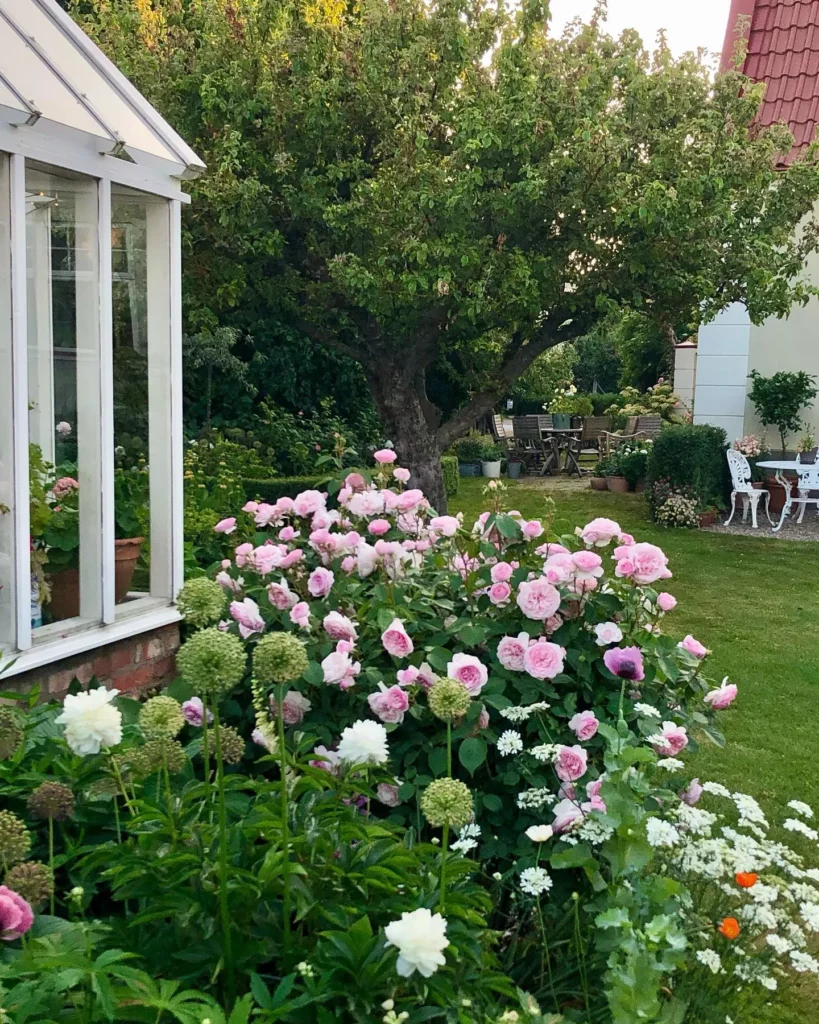
Once you have pruned your roses, it’s essential to provide proper aftercare and ongoing maintenance to ensure their growth and health. Here are some valuable aftercare tips and pruning maintenance practices to help you maintain your pruned roses and keep them flourishing throughout the year:
Mulching
Mulching is an important step in aftercare for pruned roses. Apply a layer of organic mulch around the base of the plants to retain moisture, regulate soil temperature, control weed growth, and enrich the soil with nutrients over time.
Use materials like bark chips, straw, shredded leaves, or compost to create a protective mulch layer.
Fertilizing
Regular fertilization is crucial for the continued health and vitality of pruned roses. Apply a balanced rose fertilizer, following the manufacturer’s instructions.
Feed your roses at the beginning of the growing season and periodically throughout the year, providing them with the necessary nutrients for robust growth and abundant blooms.
Watering
Adequate watering is essential for maintaining pruned roses. Monitor the moisture levels of the soil and water deeply when necessary. Aim to keep the soil consistently moist but not waterlogged.
Water at the base of the plants, avoiding wetting the foliage to prevent the risk of disease. Adjust your watering routine according to weather conditions, ensuring your roses receive sufficient hydration.
Pest and Disease Monitoring
Vigilance against pests and diseases is crucial for the long-term health of your pruned roses. Regularly inspect your plants for any signs of pests or diseases, such as aphids, black spot, or powdery mildew.
Take immediate action to address any issues and consider using organic pest control methods or consulting with a local garden expert for guidance.
Clean Tools and Equipment
Properly maintaining your pruning tools and equipment is essential for effective pruning and preventing the spread of diseases. After each pruning session, clean your tools thoroughly with a disinfecting solution or rubbing alcohol to remove any residual sap or pathogens.
Regularly sharpen the blades to ensure clean cuts, making it easier for the plants to heal.
Troubleshooting Common Pruning Issues
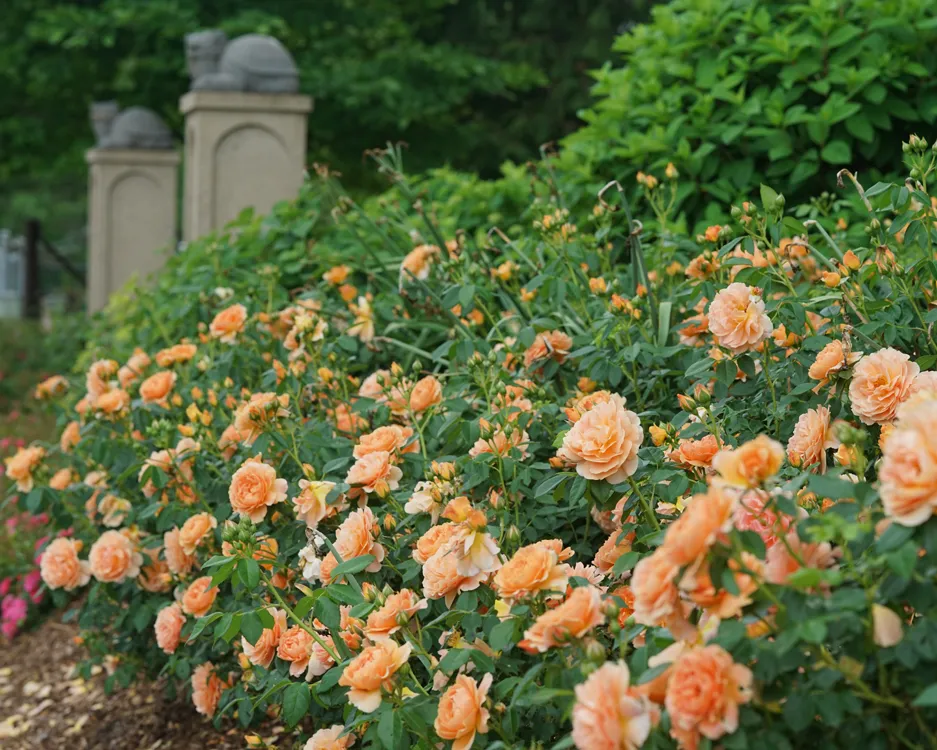
Pruning roses can be a rewarding task, but it can also come with its fair share of challenges. In this section, we will address some common pruning problems that you may encounter, such as incorrect cuts, excessive pruning, slow regrowth, and poor flowering.
By understanding these issues and implementing the right solutions, you can overcome these obstacles and achieve the best results with your pruned roses.
Incorrect Cuts
One of the most common pruning problems is making incorrect cuts. This can happen when you prune too close to the bud or leave too long of a stub, disrupting the plant’s growth pattern.
To avoid this, always make clean, angled cuts about 1/4 inch above an outward-facing bud. This encourages healthy regrowth and prevents the growth of inward-facing branches.
Excessive Pruning
Another issue that can arise is excessive pruning, which involves removing more than one-third of the plant’s overall growth. This can weaken the rose bush and lead to poor flowering.
To prevent excessive pruning, follow the recommended pruning guidelines for your specific rose variety. If you’re unsure, it’s always better to err on the side of caution and trim conservatively.
Slow Regrowth
After pruning, you may notice slow regrowth or a lack of new shoots. This can be due to various reasons, such as improper pruning techniques or unfavorable growing conditions.
To promote faster regrowth, ensure that you’re pruning at the right time, providing adequate sunlight, watering appropriately, and fertilizing as needed. Additionally, make sure you’re not pruning too aggressively, as this can stunt growth.
Poor Flowering
If your pruned roses are not producing the desired number or quality of blossoms, poor flowering may be the issue. This can be caused by factors such as insufficient sunlight, nutrient deficiencies, disease, or incorrect pruning techniques.
Take note of the specific conditions in your garden and address any underlying problems accordingly. Adjusting the pruning technique, improving soil fertility, and providing proper care and maintenance can help promote better flowering in your roses.
Final Thoughts on Pruning Roses in Late Winter
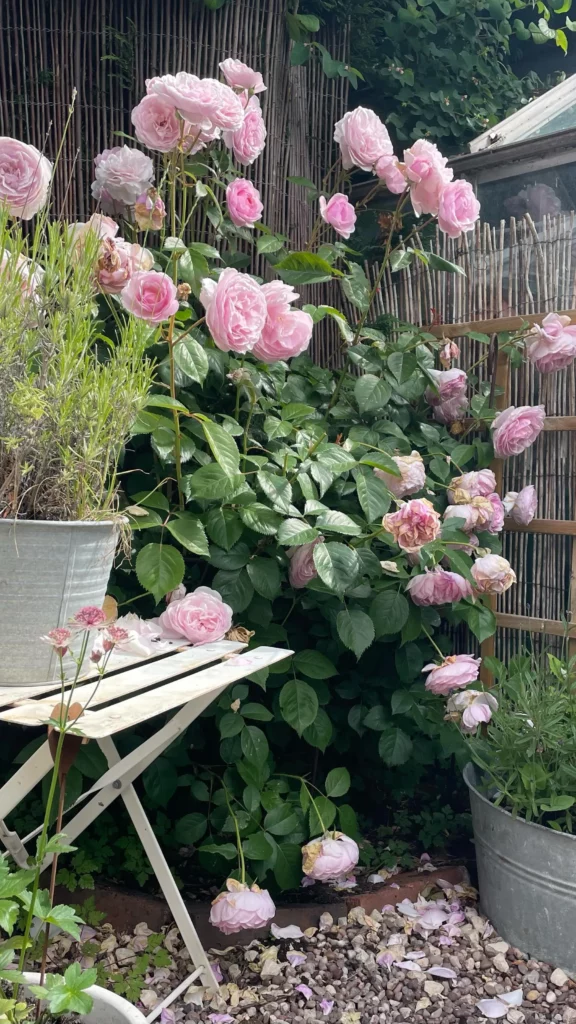
Pruning roses in late winter is a crucial step in maintaining the health and beauty of your rose garden. Throughout this article, we have explored the benefits of late winter pruning and provided a comprehensive step-by-step guide to help you achieve optimal results.
By following these guidelines and considering the specific needs of your rose varieties, you can transform your garden into a colorful and flourishing paradise.
Proper pruning during the dormant season stimulates new growth, removes dead or damaged branches, and shapes the plants for maximum blooming potential. It allows for improved air circulation and reduces the risk of diseases. Additionally, late winter pruning sets the stage for impressive displays of blossoms come spring and summer.
Remember, the key to successful rose pruning lies in understanding the unique requirements of each variety. Hybrid teas, floribundas, climbers, and shrubs all have specific timing and techniques to maximize their growth and beauty.
By investing time and effort into pruning and ongoing maintenance, you will be rewarded with healthier plants, abundant blooms, and an enchanting rose garden that will capture the hearts of all who behold it.
FAQ
Q: Why is pruning roses in late winter important?
A: Pruning roses in late winter is important because it helps rejuvenate the plants, stimulates new growth, and shapes them for optimal flowering in the coming seasons.
Q: What are the benefits of pruning roses in late winter?
A: Pruning roses in late winter helps remove dead, damaged, or diseased branches, improves air circulation around the plant, encourages the growth of new shoots, and enhances the overall health and vigor of the roses. It also sets the stage for abundant blooms in the spring and summer.
Q: What tools and equipment do I need for pruning roses in late winter?
A: You will need sharp pruners and loppers, protective gloves, and disinfecting solutions. Having the right tools can make the task easier and more efficient. Additionally, it’s important to maintain and clean your tools for longevity and effectiveness.
Q: Can you provide a step-by-step guide for pruning roses in late winter?
A: Certainly! In our step-by-step guide, we will walk you through the 7 steps to successfully prune roses during late winter. These steps include identifying the appropriate pruning height, making clean cuts, removing dead wood, thinning crowded areas, and shaping the overall structure of the rose bush.
Q: Are there different pruning techniques for different types of roses?
A: Yes, different types of roses may require specific pruning techniques and timing. In this section, we will explore the pruning needs of hybrid teas, floribundas, climbers, shrubs, and other popular rose varieties. We will provide guidance on when to prune each type, how much to remove, and any specific techniques or considerations to keep in mind.
Q: What aftercare and maintenance tips should I follow after pruning my roses?
A: After pruning your roses, it’s important to provide proper aftercare and ongoing maintenance. This includes mulching, fertilizing, watering, and monitoring for pests and disease. These maintenance tips will ensure that your pruned roses continue to flourish throughout the year.
Q: What should I do if I encounter common pruning issues?
A: Pruning roses can sometimes present challenges or complications. In this section, we will address common pruning issues such as incorrect cuts, excessive pruning, slow regrowth, and poor flowering. We will provide solutions and troubleshooting tips to help you overcome these problems and achieve the best results with your pruned roses.
Q: What are the final thoughts on pruning roses in late winter?
A: In conclusion, pruning roses in late winter is crucial for the health and beauty of your rose garden. By following the 7 steps outlined in our guide and considering the specific needs of different rose varieties, you can enhance the vitality of your plants and enjoy a stunning showcase of color throughout the growing season.

